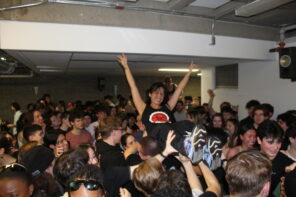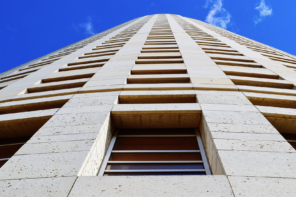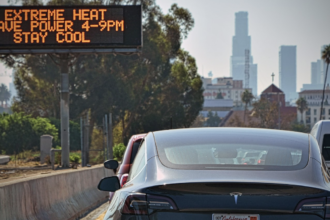If you asked me about the political situation in Myanmar a month ago, you would have received a blank stare. Over the break, however, I visited the UK’s Foreign Office building in London. It was raining, yet I noticed a group of resilient people protesting across the street. Candles burnt around photographs and signs bore the Myanmar flag. The sight of the flickering memorial candles and 8-some individuals bundled up in heavy coats prompted us to approach them. I learnt that these people had been protesting outside, every day, rain or shine, morning to night, for six months.
On February 1st, 2021, the Tatmadaw (Myanmar’s armed forces) deposed the elected government, extinguishing the tiny, nascent flame of democracy and shoving Myanmar back into the long darkness of military rule. Though the Tatmadaw claimed the general elections of 2020 overlooked voter irregularities, the armed forces failed to provide any evidence. Most believe the coup was intended to re-establish the military’s iron hold over the state, a grip which had rusted and declined over the past 10 years. Following the coup d’etat, various opposition groups emerged, including the National Unity Government (NUG).
…these people had been protesting outside, every day, rain or shine, morning to night, for six months.
Military indiscretion has coincided with ethnic insurgency. In an effort to contain rebel groups, Myanmar underwent a series of political reforms from 2011-2015, amending the Constitution to create self-administered zones with more autonomy; the central government and the 8 ‘zones’ signed a ceasefire. However, in 2016, the ongoing genocide of the Muslim Rohingya people by the military resulted in a ‘crackdown;’ the Tatmadaw’s actions were condemned by the UN and other international groups as crimes against humanity. The military state’s treatment of the Rohingya people is widely considered ethnic cleansing, and the Rohingya refugee crisis has created the world’s largest refugee camp in Bangladesh.
The military has executed political prisoners, massacred children, arrested unarmed civilians, and taken control over the media. As of early September 2022, over 974,000 people have been displaced. In one large-scale incident, the junta cut off food and water supplies in an entire town. In another, junta forces decapitated a high school teacher after burning and looting several villages. Two days later, over 80 civilians were killed in an airstrike. In an air raid attack on January 10th, targeted at the Chin National Front’s headquarters – an ethnic armed group aligned with the pro-democracy movement – five people were killed. An independent nonprofit described the attack as “an almost certain breach of Indian sovereign territory.” To date, the British and Canadian governments have failed to provide resistance groups with meaningful relief, condemn the Burmese military in international debate, or overturn the formal status of its state.
…any buzz they do receive is fleeting, attached to specific moments, skirmishes, and the ‘biggest and baddest’ events.
I couldn’t believe this was the first I was hearing of the horrors described by the protesters. Reflecting on my ignorance, I noted the lack of Western media attention Myanmar has received. I began to compare the situation to the humanitarian crisis occurring in Yemen, and later to the ongoing Israel-Palestine conflict. What these crises have in common is not only inestimable horror and tragedy but the fact that any buzz they do receive is fleeting, attached to specific moments, skirmishes, and the ‘biggest and baddest’ events. Even though these conflicts represent the horrifying and tragic realities of Burmese, Palestinian, Israeli, and Yemeni lives over years, even decades, we forget as soon as those moments fade off our phones. More lives are lost. More horrors are uncovered. More tragedies unfold. But what difference can you and I make, beyond recognizing how systematic atrocities are abridged into moments in time? I outline three issues/courses of action we can take.
- Another dimension of media response is the disproportionate coverage Western conflicts receive. The war in Ukraine appears in bold letters in the NYT’s newsletter, in my inbox every morning. This is good — the more attention, the better. But it comes at the cost of space we could be using to discuss other crises, like the one in Myanmar. We expect big and bad things to happen in the East, but not to the blond-hair blue-eyed Ukrainians. Obviously, this is not to say we should turn a blind eye to Putin’s idiocy, or diminish what Ukrainians are currently experiencing. It’s to say that when crises occur in the West, they dominate our minds and headlines for weeks, while in the East, devastating conflicts occupy a fraction of that space over years.
- How can we use the vast array of Western and non-Western media sources to broaden our perspective, and remain well educated on issues further from home? For one, we can make space in our own media for non-Western news. Even easier, we can use our time to look beyond those sources and diversify our news intake. We can pay attention to Myanmar, and Yemen, and ask others to do the same. Though contacting our local representatives to stand up to Myanmar in the UN and condemn clear violations of the human rights charter might not have much impact, the protesters I encountered emphasized the imperative of world governments to drastically alter their response. The NUG has repeatedly asked states to arm resistance groups, citing the support received by Ukraine.
- We can provide NGOs and charities in Myanmar with the resources they need to help vulnerable, displaced, and persecuted people on the ground. Global aid efforts include the International Rescue Committee, Amnesty International, the Red Cross, Save the Children, and Doctors Without Borders. Locally, the B.K.Kee Foundation acts as a catalyst for self-sustaining programs, concentrating on needs outside the focus of traditional aid efforts such as clinics and schools for low-income areas. Advance Myanmar works with local staff and organizations, supporting communities in conflict areas which struggle to get support.
…the best (and easiest) thing we can do is educate ourselves.
In conclusion, I encourage us to extend our media portfolio to non-Western sources and broaden the scope of our own. It follows that we predominantly expose ourselves to news sites reporting on more geographically and historically ‘relevant’ conflicts, but there are plenty of other news sources beyond this horizon (Al Jazeera, Israel Times, India Times, etc). Even more familiar (e.g. BBC) have correspondents reporting all around the world, so if we take two seconds to scroll past the breaking news page, we can look at the news that is frequently overlooked. Often, from where we stand, the best (and easiest) thing we can do is educate ourselves. This begins with making space for global conflicts and ceasing to condense ongoing suffering into the ‘biggest and baddest’ events. Finally, we can take action by supporting relief efforts around the globe, and demanding our governments respond to injustices beyond their borders.








